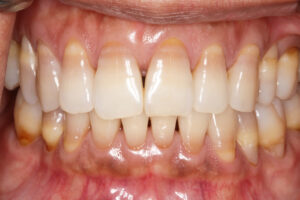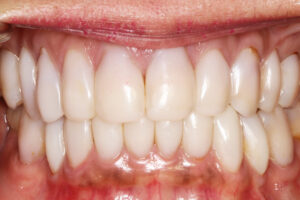Table Of Contents
Diagnosis & Treatment Planning
Composite Material Application
Bioclear vs. Traditional Dental Treatments
Common Concerns and Questions about Bioclear
Introduction
The field of dentistry has seen remarkable advancements in recent years, with technology playing a pivotal role in transforming traditional procedures into more efficient and patient-friendly experiences. One such innovation that has been making waves in the dental industry is the Bioclear method. This cutting-edge technique is changing the way dental professionals approach cosmetic and restorative dentistry, offering patients a minimally invasive, aesthetically pleasing, and long-lasting solution for a wide range of dental issues. In this blog post, we’ll delve into the fascinating world of Bioclear and explore how it works to create beautiful smiles.
Understanding Bioclear
Bioclear is a dental technique developed by Dr. David Clark that is gaining popularity for its versatility and effectiveness. It combines the principles of restorative and cosmetic dentistry to address various dental problems, including gaps between teeth (diastema), chipped or damaged teeth, and black triangles (dark spaces between teeth near the gumline).
The Bioclear method employs a unique matrix system, specialized composite materials, and advanced injection molding techniques to create beautifully contoured and highly aesthetic dental restorations. Let’s take a closer look at how this process works. Get more information on how bioclear costs!
Before & After




Diagnosis and Treatment Planning
Every successful dental procedure begins with a thorough diagnosis and treatment plan. In the case of Bioclear, the dentist will assess the patient’s dental health, discuss their goals and expectations, and determine if the Bioclear technique is suitable for their needs. The dentist may also take impressions and photographs to aid in treatment planning.
Matrix Placement
One of the key components of the Bioclear method is the use of anatomically-shaped matrices. These matrices are placed around the tooth to create a tight seal, preventing the composite material from flowing where it’s not supposed to. The matrix system helps create ideal tooth contours and contacts.

Composite Material Application
After the matrix is placed, a specialized, high-quality composite material is injected into the space between the teeth. This composite material is not only aesthetically pleasing but also durable and resistant to staining. It is available in a wide range of shades to match the patient’s natural tooth color.
Shaping and Sculpting
Once the composite material is in place, the dentist uses various instruments to shape and sculpt it to achieve the desired tooth shape and contour. This step is crucial for creating a seamless and natural-looking result.
Finishing Touches
After shaping and sculpting, the dentist will polish the composite material to a high shine, ensuring that it closely resembles the surrounding natural teeth. This final touch adds to the aesthetic appeal of the restoration.
Comparative Analysis: Bioclear vs. Traditional Dental Treatments
While traditional dental treatments like veneers and crowns have been effective solutions for various dental concerns, the Bioclear method offers a unique and innovative approach that sets it apart. Let’s compare Bioclear with these traditional treatments:
Veneers:
- Veneers typically require the removal of a significant amount of tooth enamel to accommodate the veneer shell, making the process irreversible.
- Bioclear, on the other hand, is a minimally invasive technique that preserves the natural tooth structure, making it a more conservative approach.
- Veneers are designed to cover the entire front surface of the tooth, while Bioclear focuses on restoring specific areas, such as gaps between teeth or chips, without compromising the healthy tooth structure.
- Bioclear restorations are created using a specialized composite material that closely mimics the natural appearance of teeth, often resulting in a more seamless and lifelike outcome compared to veneers.
Crowns:
- Crowns typically require significant tooth reduction, removing a substantial amount of healthy tooth structure to make room for the crown.
- Bioclear, being a minimally invasive technique, preserves the maximum amount of natural tooth, making it a more conservative treatment option.
- Crowns are often used to restore severely damaged or decayed teeth, while Bioclear can address a wide range of cosmetic and restorative issues, including gaps, chips, and discoloration.
By choosing Bioclear, patients can benefit from a minimally invasive approach that preserves their natural tooth structure while achieving exceptional aesthetic results. The specialized composite materials and advanced techniques used in Bioclear allow for highly lifelike restorations that seamlessly blend with the surrounding teeth. Want to learn more about the disadvantages of bioclear? click here!
Benefits of Bioclear
1. Minimally Invasive: Unlike traditional methods that may require the removal of healthy tooth structure, Bioclear is a minimally invasive technique, preserving as much of the natural tooth as possible.
2. Aesthetic Excellence: Bioclear restorations are known for their exceptional aesthetics. They closely mimic the appearance of natural teeth, making them virtually indistinguishable from the real thing.
3. Durability: The composite materials used in Bioclear are highly durable, ensuring that the restorations can withstand the daily wear and tear of chewing and speaking.
4. Versatility: Bioclear can address a wide range of dental issues, from diastema closure to restoring chipped or damaged teeth, making it a versatile solution for many patients.
5. Long-lasting Results: With proper care and maintenance, Bioclear restorations can last for many years, providing patients with a long-term solution to their dental concerns
Learn more about the 5 Benefits of Bioclear here!
Conclusion
In a world where a beautiful smile is highly valued, the Bioclear method has emerged as a game-changer in the dental industry. Its ability to provide minimally invasive, aesthetically pleasing, and long-lasting solutions for a variety of dental issues has made it a popular choice among both dentists and patients. As technology continues to advance, we can expect to see even more innovations like Bioclear that redefine the way we approach dental care, ultimately leading to healthier, happier smiles for all.
FAQs: Common Concerns and Questions about Bioclear
As with any dental treatment, it’s natural for patients to have questions and concerns about the Bioclear process. Here are some frequently asked questions (FAQs) to address common queries:
Remember, if you have any additional questions or concerns, contact us and we will provide personalized advice based on your specific situation.

